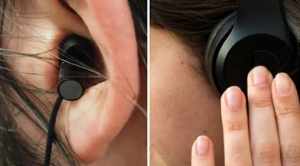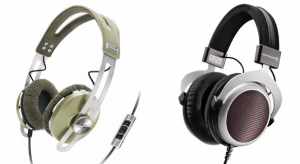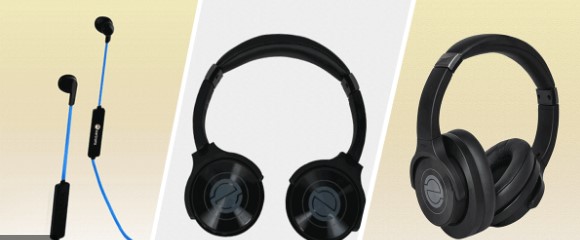The on ear vs over ear headphones debates are not familiar to everyone. Still, those who are confused and eating everyone’s head for the suggestion, we got your back. Choosing the right headphone is quite daunting as there are so many in the market. You’ll invest your time and money to get the perfect fit. Many factors make you confused, like a different style, brands, colors, features, and many more. Moreover, when it comes to on-ear or over-ear you become exhausted. At last, you end up buying what you see in the fancy commercials.
Today we will be your friend who helps in bad times. We’ll show you every important feature to help you make a decision. You’ll get both the on-ear and over-ear headphones specifications to understand the difference. Finally, we’ll give our opinion also, but the last decision is always yours to take.
Without further ado, let’s dive right into it.
Table of Contents
Considering Your Needs
Well, before we dive into serious discussion on over ear vs on ear headphones, we’d like to ask you what you want. If you are clear with your expectation, the decision process will be more straightforward.

Some simple questions might help you like will you listen in public? Are you concerned with sound leakage? Will you wear them for a long time? Do you value bass and sound quality?
Do you like to travel a lot? Are you an active person? And many more.
Asking these simple questions will help you choose the right headphone for your lifestyle.
A general comparison between on and over headphone:
| Comparison topic | On-ear | Over-ear |
| Less weight | Yes | No |
| Noise cancellation | No | Yes |
| Carrying | Yes | No |
| Comfort | Moderate | Excellent |
| Leakage | Moderate | Poor |
On-Ear vs Over-Ear Headphones:
At this point, considering all pros and cons, let’s see the primary comparison of these two headphones down below:
Comparison 1: Comfort
If you look at on-ear and over-ear headphones, you’ll notice the main difference: the size and the weight. An on-ear headphone is designed keeping in mind for portable use. It also takes a fair-sized battery and a microphone. In contrast, over-ear headphones are also used in portable settings. However, it is comparatively large and handles more hardware.

Many users claim on-ear headphones may hurt after continuous usage. But the fact is it is lightweight, and earpads are moderately tight. On the other hand, over-head headphones have a weight difference. If you continuously listen to music and look at your phone, you might feel back and neck strain. If you talk about physical differences, then on-ear headphones surely fit in, but over-ear headphones may not as it depends on an individual’s ear size.
Comparison 2: Noise Cancellation
Eventually, the feature that makes the difference between on-ear and over-ear headphones is ANC (Active Noise Cancellation). Earpads are used in both earphones to reduce outside noise. This process is known as passive noise cancellation. This simple method creates a barrier between you and the outside noise, quite similar to closing the door.
If you don’t want the whole world to hear your conversation or the music you listen to, over-ear headphones are a great choice. It covers your ear and gives a full noise isolation experience.
Comparison 3: Battery Life
Every day headphone’s battery life is getting better and better. Over-ear headphones have the largest battery compared to on-ear headphones. You heard it right, over-ear headphones provide ANC features and to support it requires significant battery life. However, on-ear headphones last longer except for the fact of ANC. If the over-ear headphones ANC feature is turned off, then it goes neck to neck with on-ear headphones.
You’ll easily get playtime over 20 hours on over-ear headphones, and for on-ear headphones, it will be between 25-30 hours. It’s important to remember that the volume level you listen to has an effect on battery life.
Comparison 4: Portability
Most on-ear headphones are made for convenience. The earcups are more compact than those seen on over-ear headphones. You can even fold up whenever you want. If you have a reasonable budget, then go for a hard-shell case for more flexibility and prevent external damage.
Unlike some other types of headphones, which can be folded up and even come with a travel case, over-ear headphones are the largest and least portable of the bunch.
Comparison 5: Heat Build Up
Many users claim over-ear headphones produce evident heat during long use. On the other hand, on-ear headphones don’t have any issue with heat. So, on-ear headphones have an advantage here.
Comparison 6: Gaming and Exercise
Keeping in mind gym buddies and athlete’s on-ear headphone comes very handy. The design and waterproof resistance keep the earpads safe. You can have the best time exercising.
Whereas over-ear headphones are the full opposite. Extra weight makes it difficult and causes neck strain; also, if the earpads are not waterproof, they’ll soak all the sweat. Over-ear headphones are a big no for exercise.
BEST ON-EAR HEADPHONES: Marshall Major III
The best on-ear headphone you’ll find in the market is Marshall Major III. This headphone is consumer-friendly and comes Bluetooth enabled. The Major III has a minimal, dark jet-black glossy design highlighting the Marshall brand logo. Moreover, it generally weighs about 0.39 pounds. The two ear cups are joined with a hinge. You can adjust anytime to fit around your head. This headphone is flexible, you can fold it at any time and put it in your bag, and it takes less space.
Marshall decorated these headphones with 40mm drivers that have been specially tuned to maximize high, middle, and low frequencies, as per the firm. The Marshall Major III cost around $249.
BEST OVER-EAR HEADPHONES: Razer Opus
The Razor’s Opus headphone offers a good balance in size, optimum battery life, and crisp audio quality. Razer is a professional gaming brand. Thinking about their gamers and giving them an ever-living gaming experience, they brought quality headphones.
This headphone has a sleek, glossy-looking hard plastic cover over the metal body. Moreover, the overall weight is around 0.58 pounds. Furthermore, it has an extendable and nicely fitted headband, also slightly softer ear cups. The latex foam protects ears from sweating excessively and keeps them comfy throughout the playtime.
Razer’s Opusheadphone will give you over 25 hours of listening time per charge. Yes, you heard me right. That means if you are a moderate user it’ll give you over 4 to 5 days of experience. Razer uses a USB-C port for charging. You can use the same cable for other devices also.
Opus gives good quality sound output. Since they are THX certified and have “reference-grade” sound quality. You’ll get a crisp sound that you’ll hear on every single instrument. You’ll get the headphone for around $170. This is absolutely a great deal.
FAQs of On Ear Vs Over Ear Headphones
Q1: Are over-ear headphones harmful?
Answer: It depends on how you are using it. Over-ear headphones can cause damage to your hearing if you listen to music loudly or put on them for a long time. But they are not as risky as earbuds. The presence of the frequency range in your ear canal may raise the level of a sound between 6 to 9 decibels, which might create significant difficulties.
Q2: What are the top 5 headphone brands?
Answer: Well, there are a ton of headphone brands you can find in the market. If we intend to name the top 5 brands, it would be difficult. So we’ll name a list of them:
Q3: Are headphones supposed to cover your ears?
Answer: Over-ear headphones provide excellent isolation. Whilst still enabling for a wide soundstage by completely covering your ears from the inside of the earcups. If you talk about the sound experience, then over-ear headphones take the first position.
Q4: How can I use headphones without damaging my ears?
Answer: Follow the given instruction to keep your ears safe:
- Try using noise-canceling headphones or earphones. Don’t turn the volume to the highest level just to escape the outside noise.
- Use a minimum sound that is comfortable to your ear but not to the highest level.
- Depending on the devices, the volume limit may vary. That’s why listening to songs or music is not more than 60% of the highest limit.
- Use headphones or earphones at an optimum level. Don’t use it to an extent. After every 1 hour of using, give 5 to 7 min break.
- Even just lowering the level will significantly reduce your chance of hearing loss.
Q5: Do Sony headphones hurt your ears?
Answer: The ear cushion on over-ear headphones wraps around the ear. It may be tough to find the best comfy headphones to get. It may even come as a surprise to learn some exclusive brands such as Sony or Bose might be harmful to the hearing.
Final Thoughts:
Last but not least, on-ear vs. over-ear headphones, totally depend on an individual’s choice. As the taste varies, you have the freedom to choose as you like. We simply showed the difference to help you make your decision.
On-ear headphones fit perfectly on your ear; besides lighter, smaller in size. On-ear headphones are preferable in driving since ambient noise is still detectable to a certain degree. Likewise, on-ear headphones ear pads position over your ears and start hurting after some time.
Now it’s your choice which one you like to opt for. Do let us know in the comment section about your thoughts and your preferred selection. We’d love to know. Have a good day.





